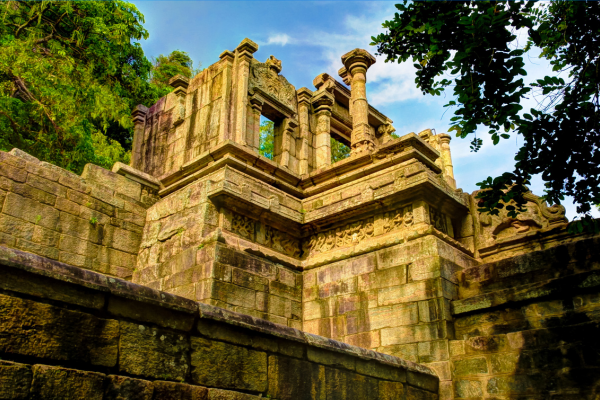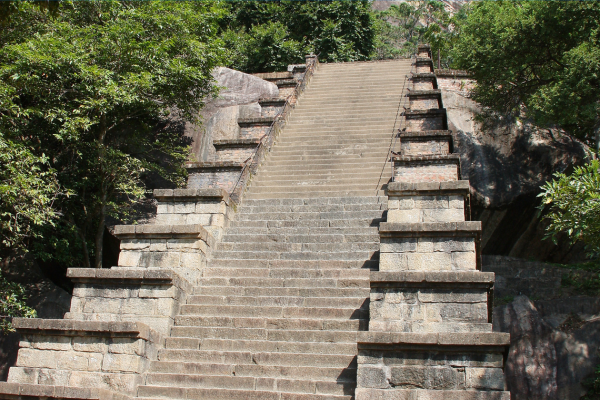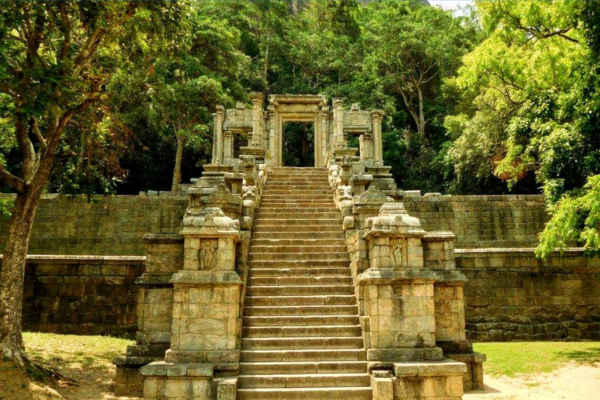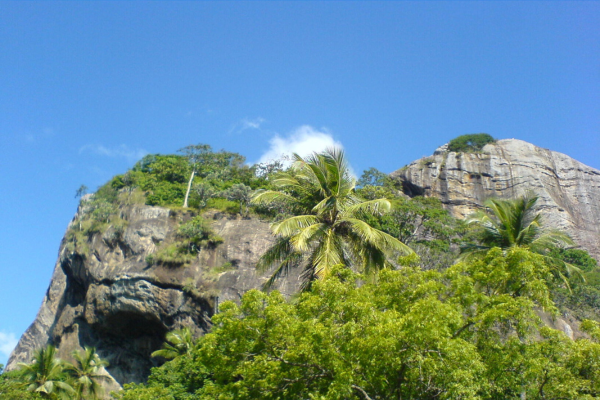Yapahuwa: Unveiling the Ancient Majesty of Sri Lanka’s Forgotten Capital – By Bhanuka – eLanka

Sri Lanka, a country adorned with historical gems, boasts an illustrious past that echoes through its ancient sites. One such treasure is Yapahuwa, a majestic rock fortress situated in the North Western Province. In this article, we embark on a journey to explore the rich history and unique features that make Yapahuwa a cultural and architectural marvel.

1. Historical Significance: Yapahuwa served as the capital of Sri Lanka for a brief but pivotal period in its history. Established in the 13th century by King Buwanekabahu I, it became the seat of political power and a symbol of strength during a time of political upheaval.
2. Architectural Marvel: The rock fortress of Yapahuwa stands proudly on a massive granite rock, showcasing the architectural prowess of the ancient Sri Lankan builders. The site features a stunning array of remnants, including a grand staircase, a massive stone lion, and impressive rock-cut images, offering a glimpse into the artistic and engineering skills of the time.
3. The Stone Lion: One of the most iconic features of Yapahuwa is the monumental stone lion, guarding the entrance to the fortress. This masterfully carved sculpture serves as a testament to the creativity and craftsmanship of the ancient Sri Lankan artists, leaving visitors in awe of its grandeur.
4. Religious Heritage: Yapahuwa is not only a testament to secular power but also a site of religious significance. The fortress houses a cave temple adorned with intricate murals and Buddha statues, providing a tranquil space for spiritual reflection amidst the historical grandeur.
5. Strategic Importance: Strategically located between the capital city of Polonnaruwa and the cultural heartland of Anuradhapura, Yapahuwa played a crucial role in the geopolitics of medieval Sri Lanka. Its elevated position provided a natural fortress, making it a formidable stronghold for the ruling powers of the time.

6. Decline and Abandonment: Despite its initial glory, Yapahuwa’s reign as the capital was short-lived. Following the death of King Buwanekabahu I, the capital shifted once again, leading to the decline of Yapahuwa’s prominence. Eventually, the site was abandoned and fell into obscurity.
7. Modern-Day Exploration: In the present day, Yapahuwa stands as a testament to Sri Lanka’s rich history, inviting both local and international visitors to explore its archaeological wonders. The site has been declared a UNESCO World Heritage site, ensuring its preservation for future generations.
8. Visitor Experience: Tourists visiting Yapahuwa can ascend the grand staircase, marvel at the stone lion, explore the cave temple, and immerse themselves in the captivating history that unfolds at every turn. The panoramic views from the fortress provide a breathtaking backdrop, offering a glimpse into the landscape that once witnessed the ebb and flow of medieval Sri Lankan power.

Conclusion: Yapahuwa, with its historical significance, architectural grandeur, and religious heritage, stands as a living testament to the rich tapestry of Sri Lanka’s past. As visitors traverse the pathways of this ancient fortress, they not only witness the echoes of a bygone era but also contribute to the preservation of a cultural jewel that continues to inspire awe and admiration.







